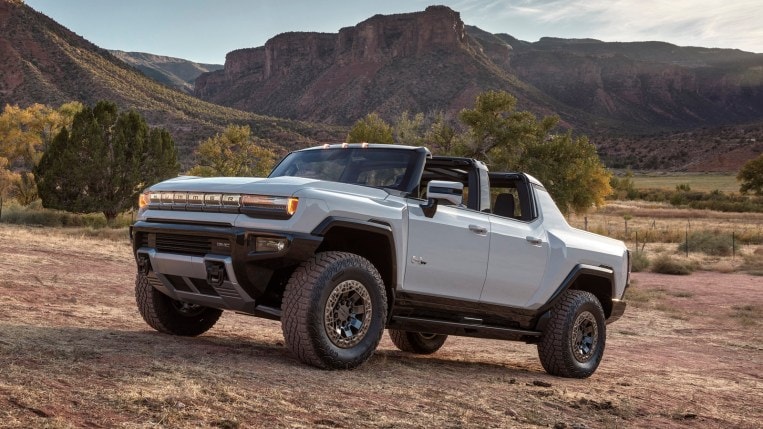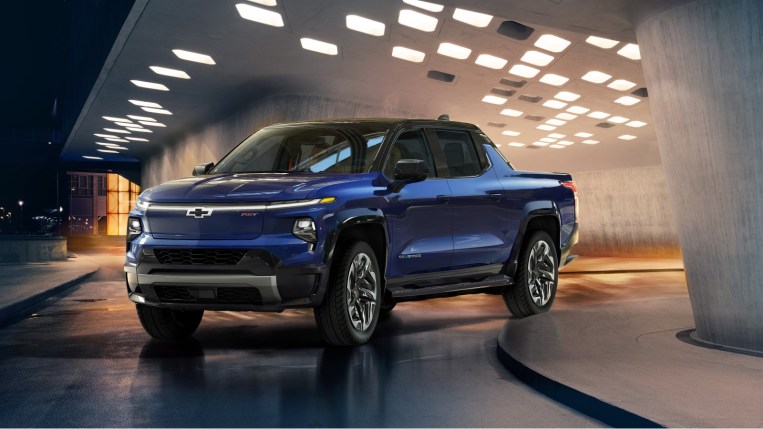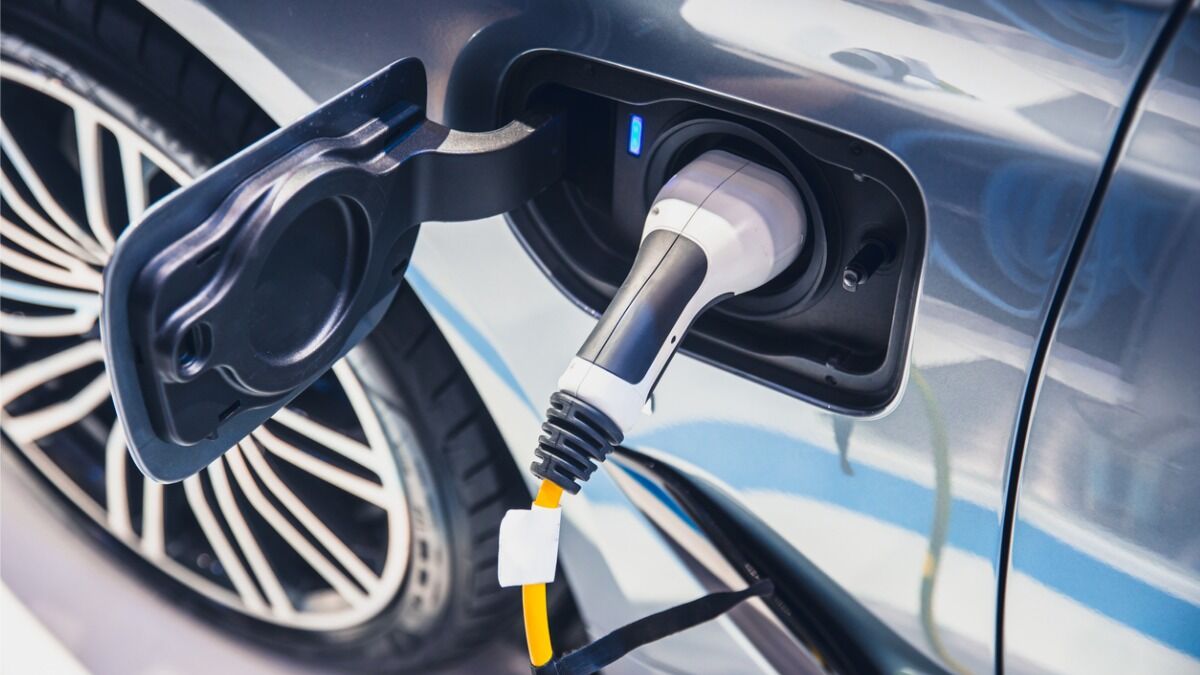Towing With an Electric Vehicle Quick Facts
- Generally, an EV can’t tow as much as its gas-fueled counterparts.
- An EV’s top advantage in towing is the instant availability of its peak torque.
- Towing a heavy load can reduce an EV’s range by as much as 50%.
With the arrival of electric pickup trucks, you may wonder about their towing and hauling capacities. Previously, most electric vehicles on the market have largely been small hatchbacks and luxury sedans, which typically aren’t associated with towing. However, the electric SUV and truck segments are rapidly growing. To lure buyers away from the tried-and-true tugging prowess of gas-powered haulers, the electric trucks must have competitive towing muscle.
In this guide, we’ll answer all of your questions about towing and hauling with an electric vehicle (EV).
- What Is Payload and Towing Capacity
- Can EVs Tow?
- How Towing and Hauling Affect EV Range
- Pros and Cons of Towing With an EV
- Our Take
What Is Payload and Towing Capacity?
At first blush, towing capacity seems self-explanatory, but what about payload? Here we explain towing and payload capacities.
Towing Capacity Explained
Towing capacity is the maximum weight a vehicle can safely pull, which changes based on how it’s configured, how much weight it’s already carrying, and how you distribute and control the load you need to tow. Just because one vehicle has more horsepower than another doesn’t necessarily mean it can tow more. That’s because, in addition to engine power, towing (and payload) capability is based on several factors involving a vehicle’s size, frame construction, suspension, axles, wheels, and more.
We can state that a truck, SUV, or other class of vehicle’s towing capacity refers to the maximum weight of a loaded trailer that it can pull.
Payload Explained
Payload refers to the cargo weight a vehicle can carry. However, keep in mind that payload capacities include everything and everybody the vehicle is hauling. Examples include:
- Passengers
- Luggage
- Cargo
- Things stuffed in the center console
- Other bits of flotsam rolling around under the seats are all included in the payload weight.
Also included in the payload measurement is “tongue weight,” which is the downward force, measured in pounds, that the trailer tongue exerts on the hitch. This is usually about 10% to 15% of the loaded trailer’s weight.
For example, the 2025 Ford F-150 has a max towing capacity of 13,500 pounds and a max payload capacity of 2,440 pounds. That means, when properly equipped, it can tow up to 13,500 pounds, or it can transport up to 2,440 pounds in the bed and the cabin. However, remember the tongue weight. If the trailer and its load combined actually weigh 13,500 pounds, you must deduct roughly 15% of that weight from the payload total to account for the tongue weight. So, in this maxed-out scenario, when towing 13,500 pounds, the maximum payload capacity would be 2,440 pounds minus 2,025 pounds (tongue weight) for a maximum payload of 415 pounds of people and cargo.
Pro tip: Never exceed a vehicle’s maximum tow limit. In fact, most experts recommend not tugging more than 80% of a vehicle’s maximum towing capacity. In our F-150 example, that would be about 10,800 pounds.
For more information on how payload and towing capacities are calculated, you can read our complete in-depth guide to payload and guide to towing.
Can EVs Tow?

Automakers build electric SUVs and trucks with towing in mind.
From what electric pickup trucks have demonstrated so far, they have surprisingly strong tow ratings, somewhat approaching their gas-powered counterparts. However, EV payload ratings are comparatively unimpressive. Electric trucks are good at towing because they generate considerable power and torque. Moreover, EVs deliver maximum torque to the wheels instantly without revving up. Another EV towing advantage is that they don’t need the heavy-duty cooling systems of gas or diesel trucks.
EV Trucks: Range, Towing, Payload Capacities
| Make and Model | Maximum Range | Maximum Towing / Payload in Pounds |
| 2026 Chevrolet Silverado EV | 492 miles | 12,500 / 2,100 |
| 2025 Ford F-150 Lightning | 320 miles | 10,000 / 2,329 |
| 2026 GMC Sierra EV | 478 miles (estimated) | 12,500 / 2,250 |
| 2025 GMC Hummer EV Pickup | 318 miles | 12,000 / 1,485 |
| 2025 Ram 1500 REV | 350 (estimated) | 14,000 / 2,625 (estimated) |
| 2025 Rivian R1T | 420 miles | 11,000 / 1,764 |
| 2025 Tesla Cybertruck | 366 miles | 11,000 / 2,500 |
EV Trucks: Towing Capabilities
The Rivian R1T can tow up to 11,000 pounds, and the Ford F-150 Lightning claims 10,000 pounds of towing capability. The Chevrolet Silverado EV boasts a max tow rating of 12,500 pounds. Topping the group is the Ram 1500 REV with a manufacturer’s estimated 14,000 pounds of towing capability. Although we will need to see it to believe it, Chevy says the Silverado EV will be able to tow up to 20,000 pounds later in its production run.
EV Trucks: Payload Capabilities
Payload is much more of an issue because electric vehicles, even without a load, are already very hefty. Although the payload ratings for electric trucks are adequate for most drivers, with the exception of the Ram 1500 REV, they can’t carry as much weight as comparable gas and diesel trucks. The reason is that an EV’s chassis already carries tremendous weight from electric motors and battery packs.
For example, the electric Ford F-150 Lightning has a max payload capacity of 2,329 pounds. Meanwhile, a regular F-150 with an old-fashioned V8 has a max payload rating of 2,440 pounds.
RELATED: EV Battery Health: The Essential Guide
Maximum Payload Capacity: EV Trucks vs. Gasoline-Fueled
| 2025 Make and Model (Crew Cab/Short Box) | EV Truck Payload Limit | Gasoline Truck Payload Limit |
| Chevrolet Silverado EV vs. Silverado 1500 | 1,800 pounds | 2,030 pounds |
| Ford F-150 Lightning vs. F-150 | 2,000 pounds | 2,440 pounds |
| GMC Sierra EV vs. Sierra 1500 | 2,250 pounds | 2,185 pounds |
| Ram 1500 REV vs. 1500 | 2,625 pounds (estimated) | 1,980 pounds |
How Towing and Hauling Affect EV Range
Any amount of weight hauled or towed will reduce an EV’s range and a combustion vehicle’s fuel economy. This shouldn’t come as a shock to anyone. According to some experts, your gas-powered fuel economy will drop from 1% to 2% for every 100 pounds towed. Let’s split the difference and say the average mileage loss is 1.5%. If your tow vehicle is the 2025 GMC Sierra 1500 with the 5.3-liter V8, the estimated fuel economy in combined city-and-highway driving is 18 mpg. If your towed load is 5,000 pounds, and the experts are correct, that will mean a 75% reduction (50 x 1.5%) in fuel economy to about 4.5 mpg.
Likewise, towing will reduce an EV’s fuel efficiency, which affects range. This translates into more charging stops on longer trips. For example, a Rivian spokesperson has admitted that towing a heavy trailer (11,000 pounds) with the R1T pickup will cut its estimated range by about half. Let’s give Rivian the benefit of the doubt and say that the R1T will actually deliver 420 miles of range. Hitching a tow load of 11,000 pounds to it will reduce the range to roughly 210 miles.
Some real-world testing has shown an even worse outlook for how towing impacts range. In 2022, Motor Trend tested the towing range of the Ford F-150 Lightning, specifically a Platinum model with an estimated range of 300 miles in mixed driving and an 8,500-pound tow rating.
With a small travel trailer weighing 3,140 pounds, the truck’s range dropped to 115 miles. When pulling a middleweight 5,260-pound camper, it could only go 100 miles. Towing a heavy 7,218-pound camper dropped the truck’s range to only 90 miles.
It’s a similar story with payload, but the impact on a vehicle’s range isn’t as significant. Since pickup trucks have modest payload ratings, an F-150 Lightning carrying 1,800 pounds doesn’t have to work as hard as the same truck towing more than double that weight.
RELATED: Report: Ram Cancels Long-Range Version of EV Pickup
Pros and Cons of Towing With an EV

There are solid arguments to be made for towing with an EV and not towing with an EV. We’ve listed the more obvious ones.
Pros of EV Towing
- Full torque instantly: Unlike an internal combustion engine (ICE) that requires reaching a certain number of revolutions per minute to reach its peak torque, an electric motor delivers its peak torque the instant it’s engaged. Consequently, it is able to accelerate more smoothly and rapidly from a standstill, even on an incline.
- Regenerative brakes: EVs use a regenerative system that recaptures kinetic energy to help charge the battery rather than allowing that energy to dissipate as heat. Instead, it harnesses that energy, turns it back into electricity, and stores it in the battery. When operated properly, it can help manage braking.
- Less racket: Whether towing or not, EVs simply function more quietly. Towing is stressful enough, a little quiet helps.
Cons of EV Towing
- Higher purchase price: When comparing apples to apples, EVs typically cost significantly more to buy than an ICE vehicle.
- Range suck: We’ve already discussed that towing reduces an EV’s range, requiring extra charging stops.
- Lower maximum payload limit: In nearly every case, the ICE version of a vehicle can carry more payload than the EV version.
- Battery wear and tear: Towing can reduce an EV battery’s life expectancy.
- Temperature extremes: Extreme cold and heat can impact battery efficiency, further reducing range. Moreover, temperature extremes can drastically slow the charging process.
Our Take
We would be more inclined to use an EV as a tow vehicle if the distance were short without inclines, and the weather were moderate. Struggling with multiple charging stops and negotiating public charging stations with a trailer in tow isn’t our idea of big fun. On the other hand, you can’t diminish the effect of instant torque when tugging a particularly heavy load.
RELATED: How Much Does It Cost to Charge an Electric Car?








